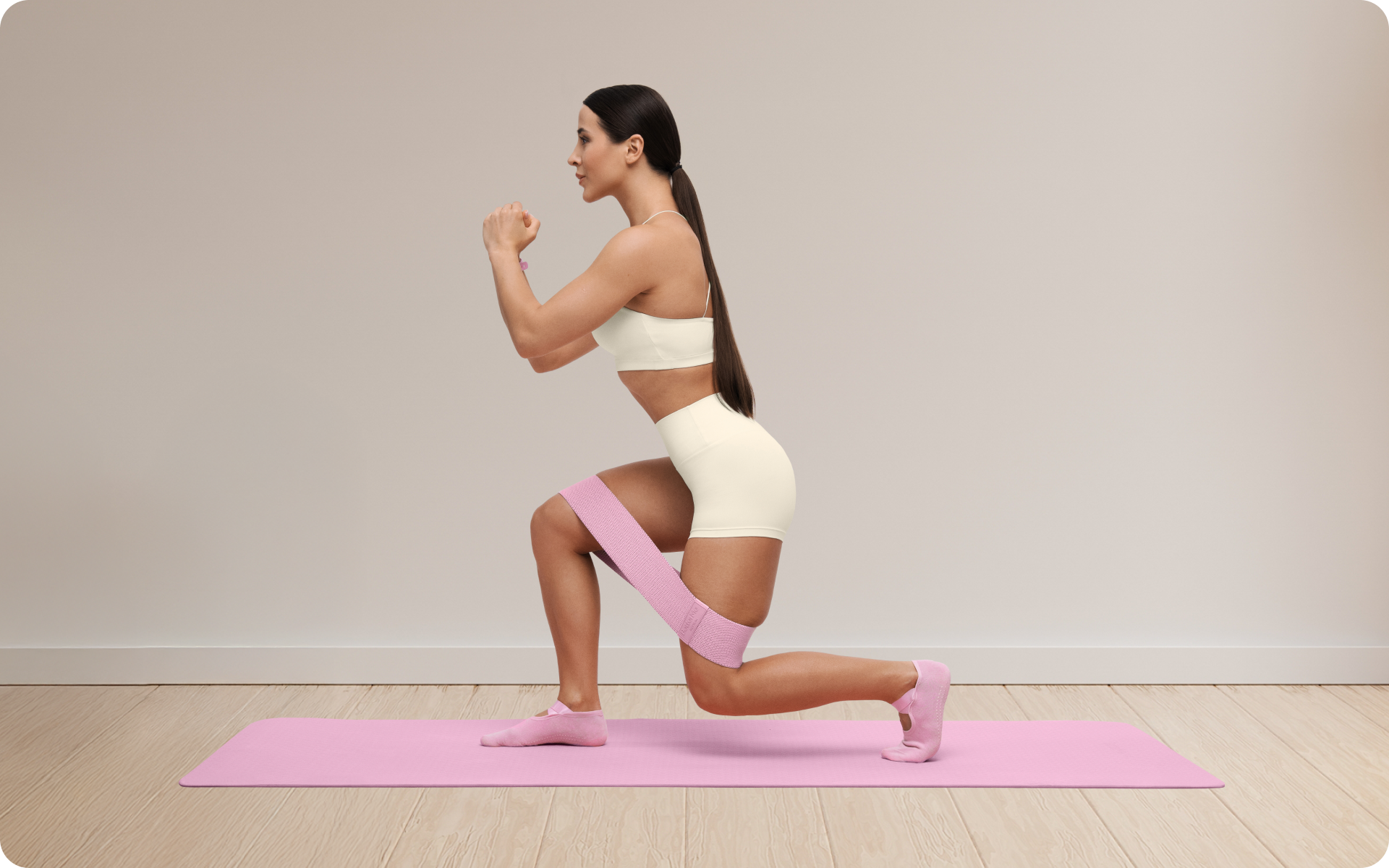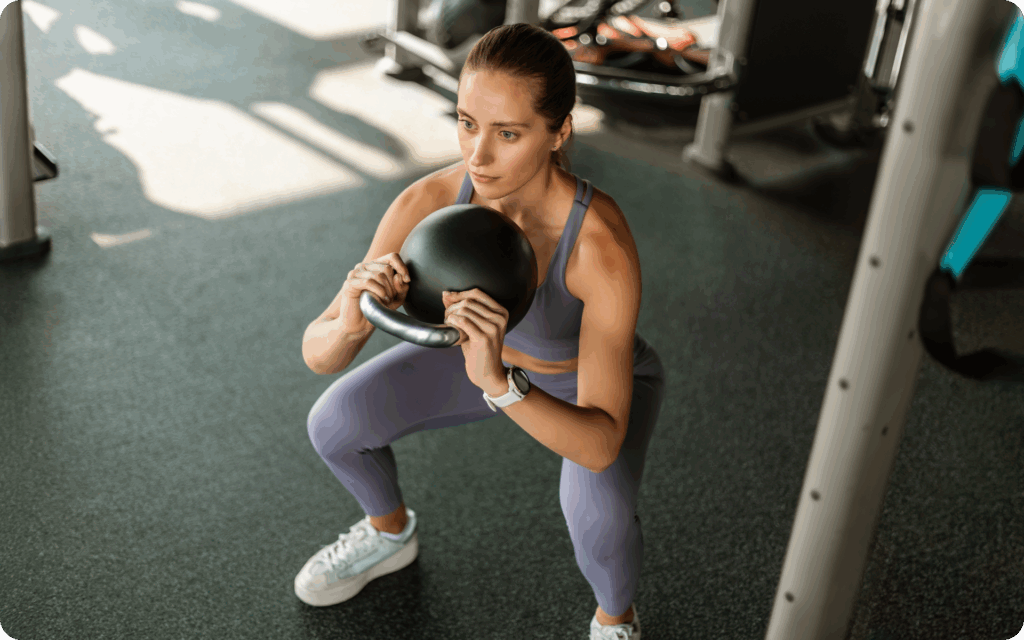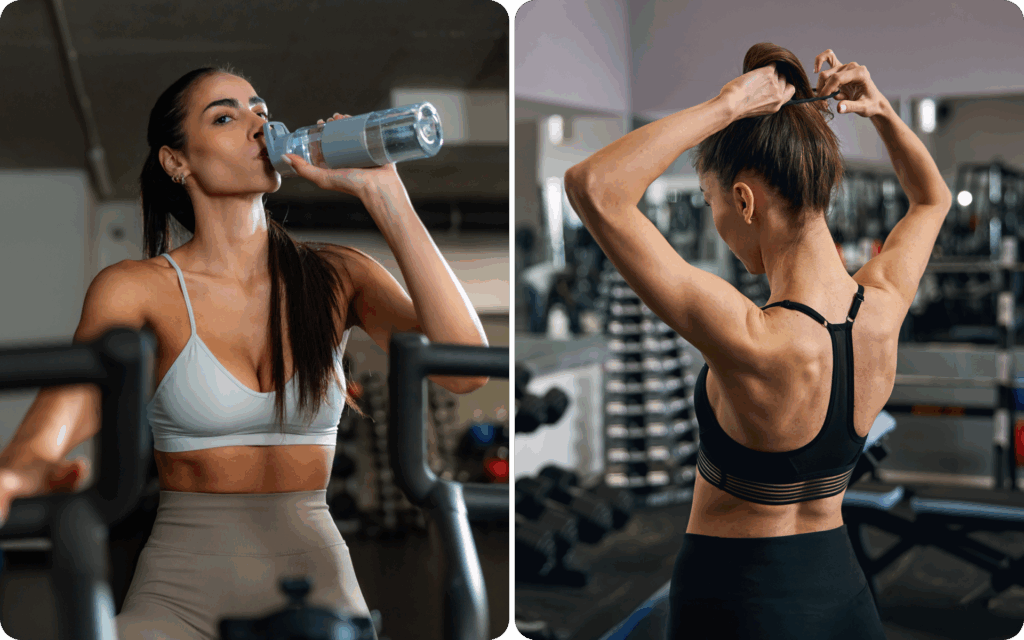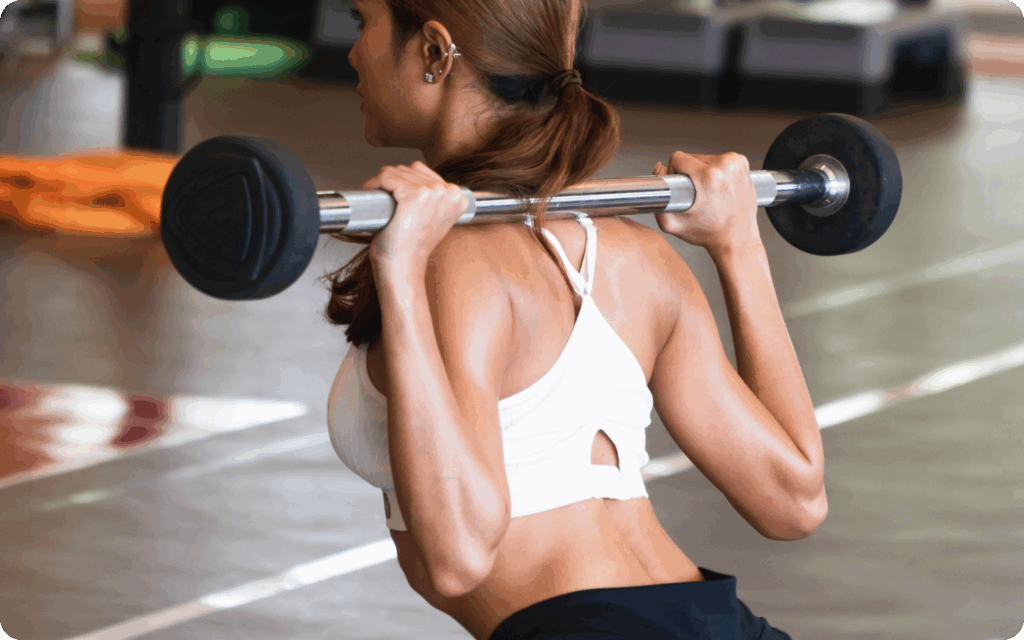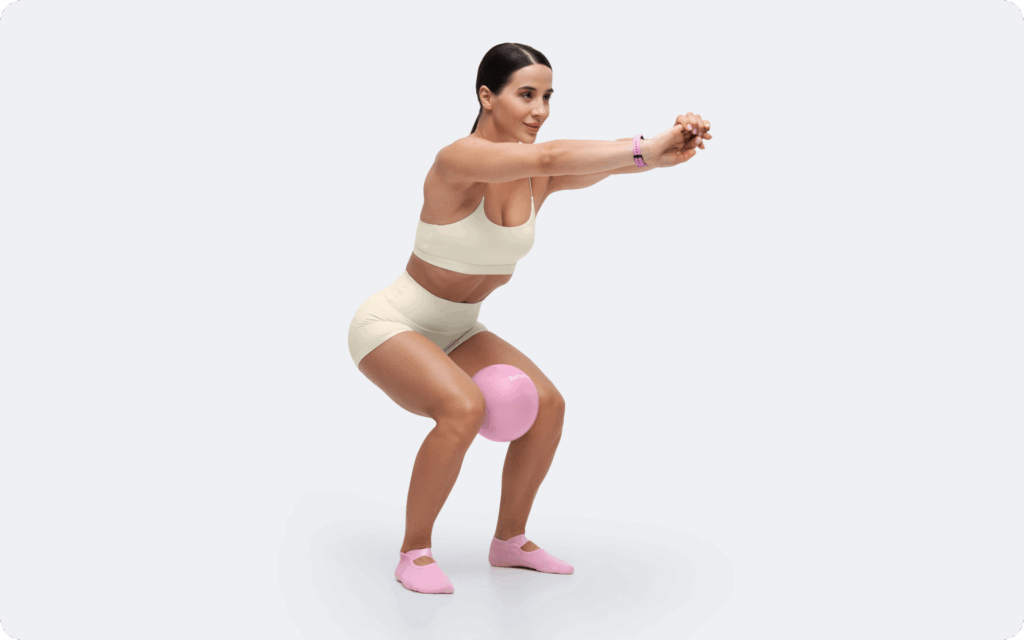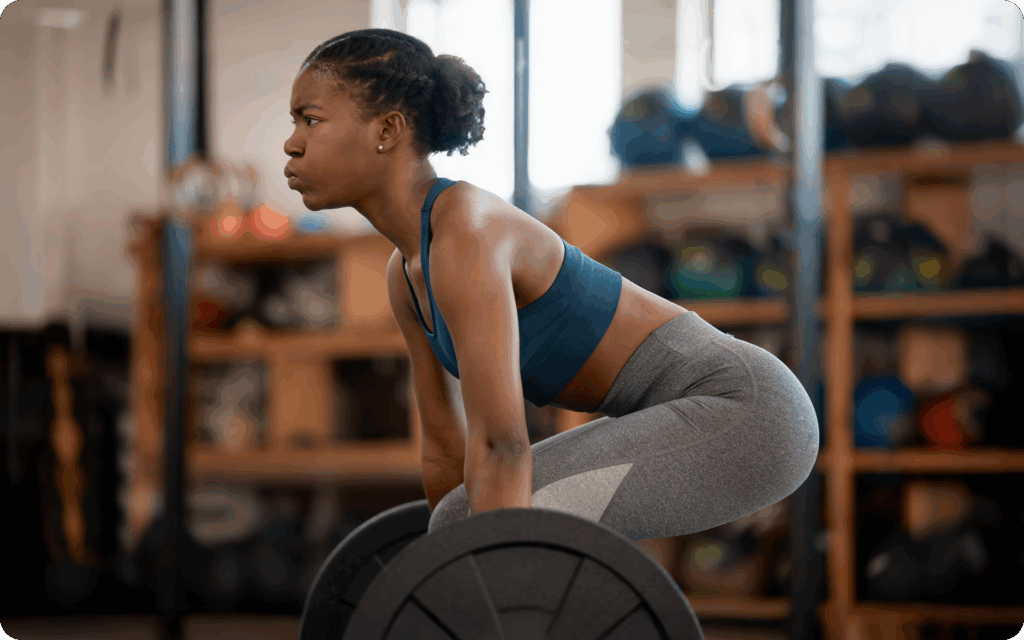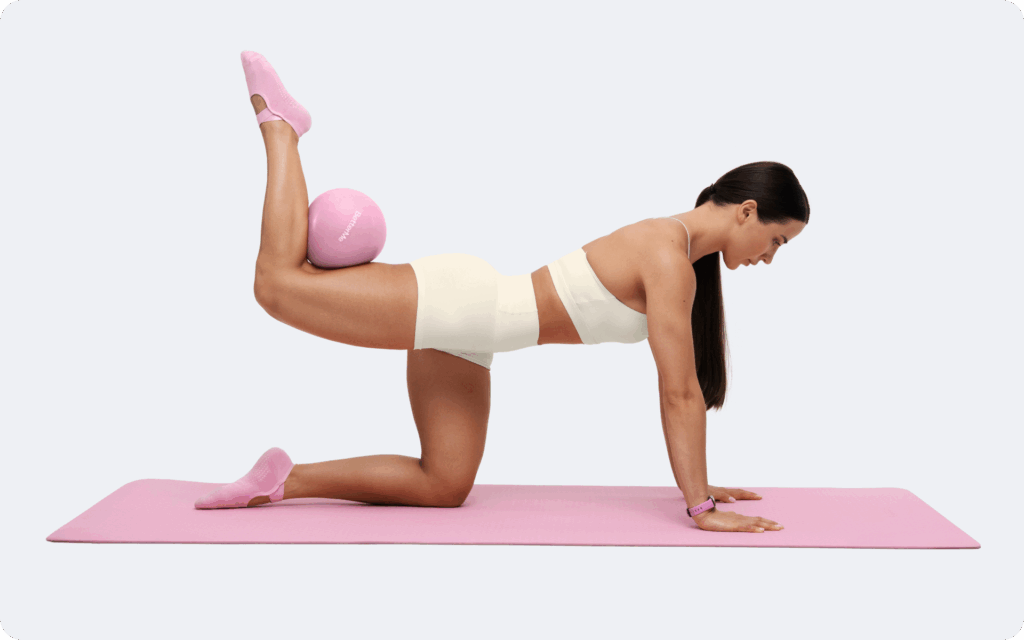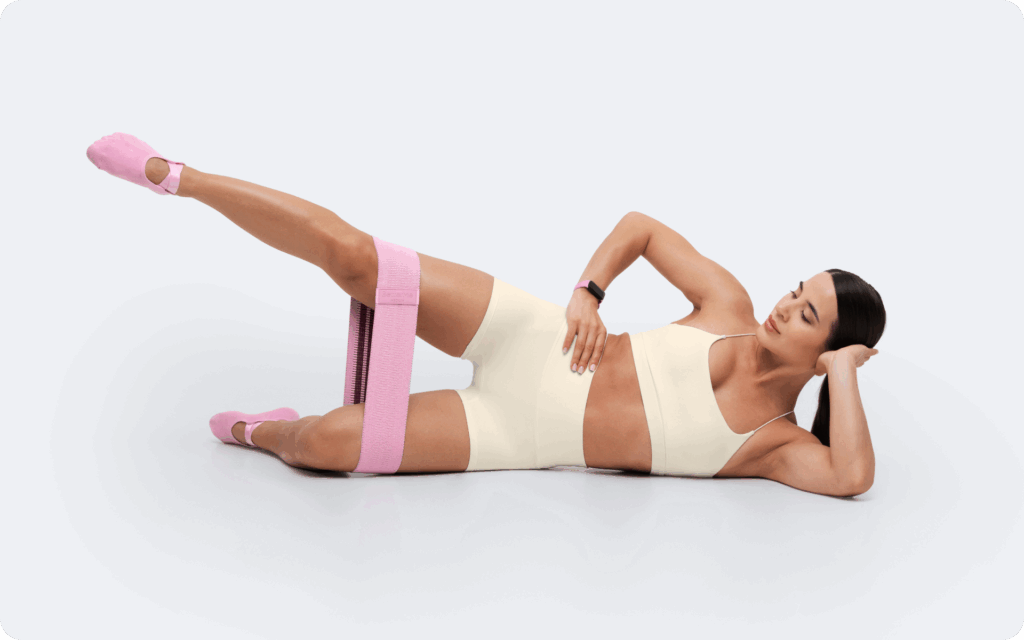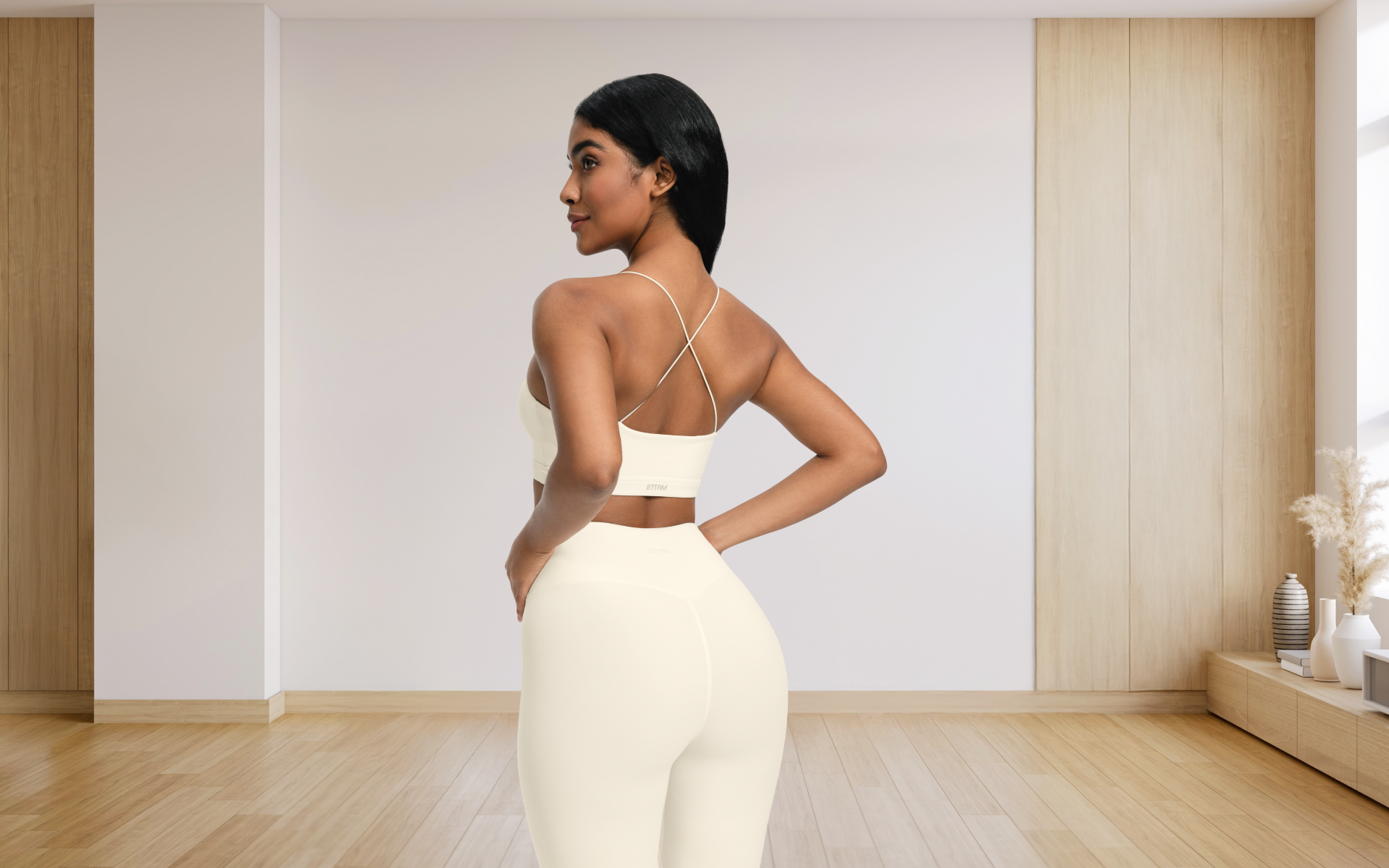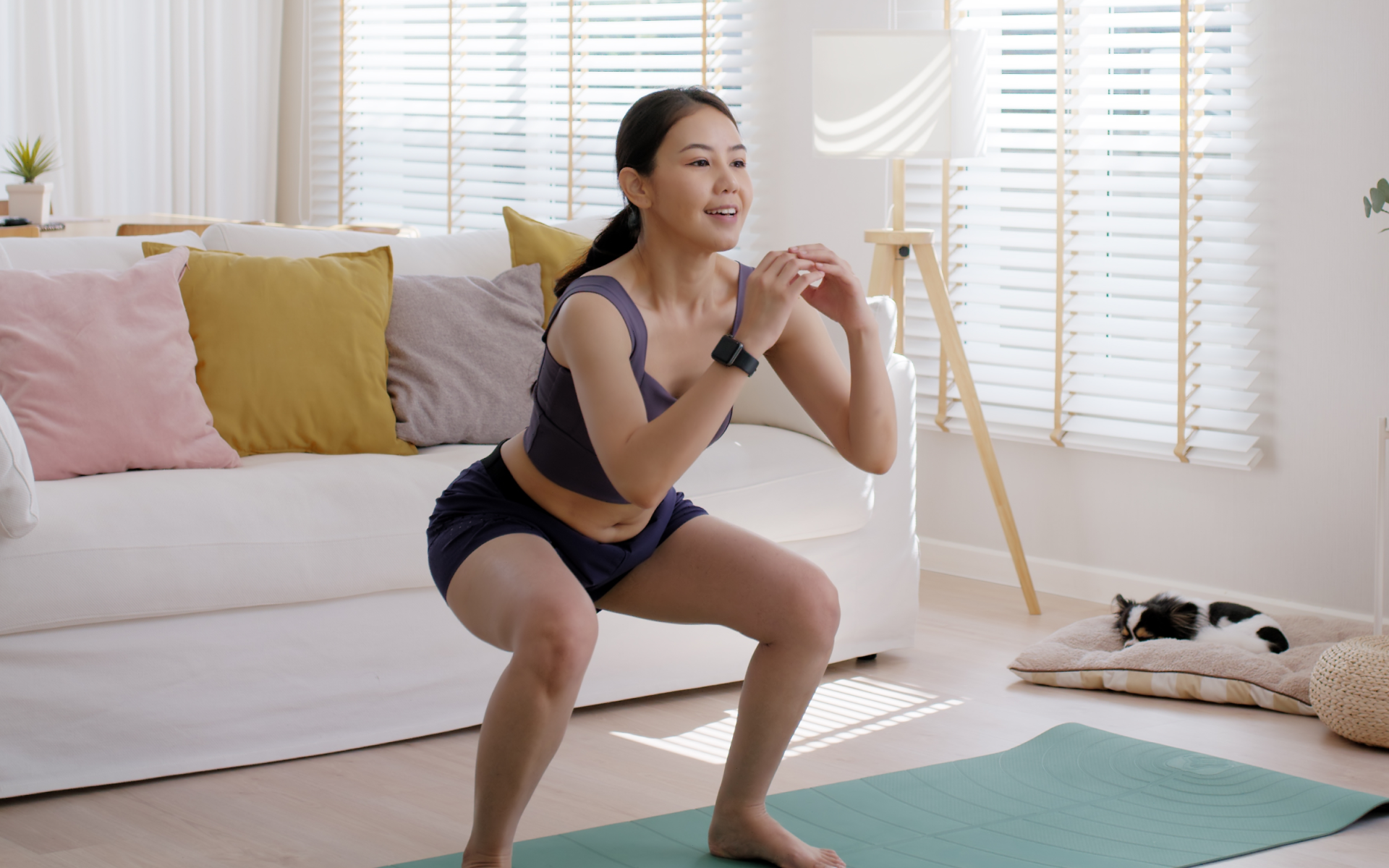Strong glutes are more than just an aesthetic goal, they’re the foundation of a powerful, resilient, and functional body. For beginners, focusing on this crucial muscle group can unlock significant benefits, including improved posture, enhanced athletic performance, and a lower risk of injury. The gluteal muscles – comprising the gluteus maximus, medius, and minimus – are central to nearly every major movement you perform, from standing up to sprinting.
This article provides a detailed, evidence-based guide to building stronger glutes. We’ll break down the science of muscle growth into simple, actionable steps. You won’t just learn what to do, but why it works. We’ll provide a structured beginner glute-focused workout plan with six highly effective exercises, and answer common questions to ensure you start your journey with confidence and clarity.
How to Increase Glute Size
Building muscle, or hypertrophy, is a science (1). To effectively increase the size of your glutes, you need a strategy grounded in proven training principles. It isn’t about doing endless reps of random exercises, but about creating the right stimulus for growth.
Here are the key evidence-backed strategies that will drive results.
Master Progressive Overload
Progressive overload is the most important principle of muscle growth (2). It means you must continually challenge your muscles to do more than they are accustomed to. Without this increasing demand, your body has no reason to adapt by building bigger, stronger muscle tissue.
Implementation:
- Add weight: Increase the load you are lifting for the same number of reps and sets. Even small jumps of 2.5-5 lbs make a difference over time.
- Add reps: Aim to complete one or two more repetitions with the same weight.
- Add sets: Increase the total number of sets you perform for an exercise.
- Improve form: Enhancing your technique and range of motion with the same weight also constitutes overload.
Train with Sufficient Effort (Reps in Reserve)
The intensity of your sets matters just as much as the volume. To trigger a growth response, you need to train close to momentary muscular failure (3).
A practical way to measure this is using the reps in reserve (RIR) scale. An RIR of 1 means you could have only performed one more rep with good form (4, 5).
Implementation:
- For most of your sets, aim for an RIR of 1-3. This means you should finish the set feeling like you had only 1 to 3 good reps left in the tank.
- Training to absolute failure (0 RIR) can be effective, but also generates more fatigue, so it should be used sparingly, perhaps on the last set of an isolation exercise.
BetterMe: Health Coaching app helps you achieve your body goals with ease and efficiency by helping to choose proper meal plans and effective workouts. Start using our app and you will see good results in a short time.
Get Enough Weekly Volume and Frequency
Volume refers to the total amount of work you do, typically calculated as sets × reps × weight (1). Research has suggested a dose-response relationship between volume and hypertrophy (6), but there is a sweet spot as there’s such a thing as too much.
For glutes, aiming for 12-20 hard sets per week is a well-supported range for driving growth (7). Spreading this volume across 2-3 sessions per week is often better than cramming it all into one day, as it optimizes muscle protein synthesis and recovery (8).
Implementation:
- Beginners: Start with 10-12 total weekly sets for glutes, spread across two sessions.
- Progression: As you adapt, gradually increase your weekly volume toward 16-20 sets. A great glute day workout will include a mix of compound and isolation movements.
Use Full Range of Motion (ROM) and Emphasize the Stretch
Modern research has highlighted the importance of training muscles at long lengths (9). When a muscle is stretched under load, it experiences high levels of mechanical tension, which is a powerful signal for growth (10).
This is why exercises that challenge the glutes in a deep stretch, such as a Bulgarian split squat or Romanian deadlift, are so effective (11).
Implementation:
- Perform each repetition through the fullest range of motion you can control safely.
- Incorporate exercises that load the glutes in a stretched position.
- Use a controlled tempo, especially on the eccentric (lowering) portion of the lift, to maintain tension.
Prioritize Smart Exercise Selection
Your glutes perform several functions:
- Hip extension (thrusting forward)
- Hip abduction (moving the leg away from the body’s midline)
- Hip external rotation (12).
A complete glute building workout plan must include exercises that target all these functions to develop the gluteus maximus, medius, and minimus (11).
Implementation:
- Hip Extension: Include a primary thrust or bridge (e.g. barbell hip thrust) and a hinge (e.g. Romanian deadlift).
- Knee-Dominant: Add a squat or lunge variation that trains the glutes in a deep, stretched position (e.g. Bulgarian split squat).
- Abduction/Rotation: Finish with an exercise that targets the upper/side glutes (e.g. cable hip abduction).
Fuel Your Growth with Proper Nutrition
Training provides the stimulus for growth, but nutrition provides the raw materials. Without adequate calories and protein, your body can’t effectively build new muscle tissue (13).
Implementation:
- Protein: Consume around 0.7-1.0 grams of protein per pound of body weight daily (14).
- Calories: Eat in a slight caloric surplus (about 250-500 calories above your maintenance level) to provide energy for muscle repair and growth (15).
- Creatine: Consider supplementing with 3-5 grams of creatine monohydrate daily, one of the most studied supplements for improving strength and muscle mass (16).
Are you interested in pushing your limits? Explore our guide to taking on a 30-Day Glute Challenge.
Read more: Lower-Body Gym Workout for Female Beginners: Complete Guide
Do Glute Workouts Actually Work?
Yes, glute workouts absolutely work. The muscles of the glutes are just like any other skeletal muscle in your body – when they’re subjected to the right stimulus, they’ll adapt by growing larger and stronger.
The primary drivers of this growth are well-understood principles of exercise science (17):
- Mechanical Tension: This is the force that is experienced by muscle fibers when you lift challenging weights. It’s arguably the most important factor for hypertrophy.
- Progressive Overload: As previously mentioned, you must consistently increase the demand on your muscles.
- Effort: Training close to failure ensures you recruit the maximum number of muscle fibers, signaling them to grow.
- Volume: Performing enough total work (sets and reps) provides the necessary stimulus for adaptation.
However, a common question is whether you can isolate the glutes from other lower-body muscles. The answer is no, not completely. The body works as an integrated system. Exercises like squats, lunges, and deadlifts will always involve the quads and hamstrings to some degree.
The closest you can probably get is with isolation movements such as cable abduction – even kickbacks recruit the hamstrings!
The key is to bias the glutes. You can shift the emphasis of an exercise onto the glutes through specific exercise selection and precise execution.
For example:
- A hip thrust places a massive demand on the glutes with minimal quad involvement.
- A Romanian deadlift emphasizes the glutes and hamstrings over the quads (18).
- With a squat, adjusting your stance and torso angle can shift more load onto your posterior chain (19). This is why a well-designed glute program is so effective – it’s built around movements that preferentially target the gluteal muscles.
How Many Exercises Are Needed to Grow?
You don’t need a dozen different exercises to build your glutes. In fact, doing too many similar movements can be counterproductive, leading to what’s known as “junk volume”.
Research and coaching experience have suggested that 4 well-chosen exercises per glute-focused session are sufficient to create a powerful growth stimulus (20).
The goal is to select exercises that train the glutes through their various functions and at different muscle lengths, without creating excessive overlap. A good glute workout routine should cover these patterns:
- Hip Extension (Shortened Position): A hip thrust or glute bridge. This trains the glutes when they are maximally squeezed.
- Hip Extension (Stretched Position): A Romanian deadlift, good morning, or deep split squat. This loads the glutes when they’re lengthened.
- Knee-Dominant Movement: A squat variation or a lunge. This develops the glutes in coordination with the quads.
- Abduction Movement: A cable abduction, banded lateral walk, or side-lying hip raise. This targets the gluteus medius and minimus, which are essential for hip stability and creating a “rounded” look.
Avoid exercise redundancy. For example, performing a barbell hip thrust, a machine hip thrust, and a single-leg hip thrust all in one session is inefficient. They all train hip extension in the shortened position.
A better approach would be to pair:
- A barbell hip thrust (shortened position)
- A Bulgarian split squat (stretched position)
- A cable abduction (abduction)
Are you ready to master movements that put the focus squarely on your glutes? Check out our list of top Glute Isolation Exercises.
What Is the Best Glute-Focused Workout Plan?
The best glute-focused workout plan is one that’s structured, progressive, and balanced. This program is designed for beginners, but is effective for anyone who is looking to build a stronger backside. It incorporates six key exercises that cover all the necessary movement patterns for comprehensive glute development.
Program Notes:
- Frequency: Perform this workout 2-3 times per week on non-consecutive days (e.g. Monday and Thursday).
- Volume: The program provides 11 total hard sets per session. If training twice a week, this totals 22 sets, which is an excellent target for growth.
- Effort: Aim for an RIR of 1-2 on most sets. This means you should feel you have 1-2 reps left in the tank.
- Progression: Your goal each week is to add a rep to your sets or add a small amount of weight. Log your workouts to track your progress.
- Deloads: Every 4-6 weeks, take a deload week by reducing your weights by about 40-50% and stopping well short of failure. This promotes recovery and prepares you for the next phase of hard training.
Reasons why BetterMe is a safe bet: a wide range of calorie-blasting workouts, finger-licking recipes, 24/7 support, challenges that’ll keep you on your best game, and that just scratches the surface! Start using our app and watch the magic happen.
Here’s the 6-exercise glute program:
1. Barbell Hip Thrust
This is the king of glute exercises for targeting the gluteus maximus with heavy loads.
- How to Perform:
- Sit on the floor with your upper back against a sturdy bench.
- Place a padded barbell across your hips. Your feet should be flat on the floor, about shoulder-width apart, and your knees bent.
- Drive through your heels to lift your hips toward the ceiling until they are fully extended. Your shins should be roughly vertical at the top.
- Squeeze your glutes hard at the top for a moment.
- Lower your hips back down with control.
- Sets and Reps: 3 sets of 8-12 reps
- Rest: 90-120 seconds
- Tempo: 2-1-1-1 (2 sec lower, 1 sec pause at bottom, 1 sec lift, 1 sec squeeze at top)
- Common Mistakes: Overarching the lower back, not achieving full hip extension.
2. Bulgarian Split Squat
This single-leg exercise is fantastic for loading the glutes in a deep, stretched position.
- How to Perform:
- Stand a few feet in front of a bench. Place the top of your rear foot on the bench.
- Hold dumbbells in each hand or use just your body weight.
- Keeping your torso relatively upright but with a slight forward lean, lower your hips straight down until your front thigh is parallel to the floor or lower.
- Drive through your front foot to return to the starting position.
- Sets and Reps: 3 sets of 8-12 reps per leg
- Rest: 60-90 seconds between legs
- Tempo: 3-1-1-0 (3 sec lower, 1 sec pause at bottom, 1 sec lift, 0 sec pause at top before the next rep)
- Common Mistakes: Placing the front foot too close to the bench, pushing off the back leg.
3. Romanian Deadlift (RDL)
The RDL is a premier hinge movement that targets the hamstrings and glutes.
- How to Perform:
- Stand with your feet hip-width apart, holding a barbell or dumbbells in front of your thighs.
- Keeping a slight bend in your knees, push your hips straight back as if trying to touch a wall behind you. Your back should remain flat.
- Lower the weight until you feel a deep stretch in your hamstrings, typically just below the knees.
- Drive your hips forward and squeeze your glutes to return to the standing position.
- Sets and Reps: 3 sets of 10-15 reps
- Rest: 90 seconds
- Tempo: 3-0-1-1 (3 sec lower, no pause at bottom, 1 sec lift, 1 sec squeeze at top)
- Common Mistakes: Bending the knees too much (turning it into a squat), rounding the lower back.
4. 45-Degree Back Extension
When it’s performed with a glute focus, this exercise is an excellent hip extension movement.
- How to Perform:
- Set up on a 45-degree back extension machine with the pad supporting your upper thighs.
- Instead of keeping your back straight, allow it to round slightly.
- Lower your torso, then drive your hips into the pad and squeeze your glutes to lift your torso back up. Think of it as a standing hip thrust.
- Focus the contraction entirely in your glutes, not your lower back.
- Sets and Reps: 2 sets of 12-20 reps
- Rest: 60 seconds
- Tempo: 2-0-1-2 (2 sec lower, no pause at bottom, 1 sec lift, 2 sec squeeze at top)
- Common Mistakes: Using momentum, initiating the movement with the lower back.
5. Cable Hip Abduction
This isolation exercise targets the gluteus medius and minimus, which helps build the “upper shelf” of the glutes.
- How to Perform:
- Attach an ankle cuff to a low cable pulley and fasten it to your outer ankle.
- Stand sideways to the machine, holding on to it for support.
- Keeping your leg straight, move it out to the side as far as you can control.
- Pause for a moment, focusing on the contraction in your side glute.
- Slowly return to the starting position.
- Sets and Reps: 2 sets of 15-20 reps per leg
- Rest: 45-60 seconds between legs
- Tempo: 2-0-1-1 (2 sec return, no pause at bottom, 1 sec lift, 1 sec squeeze)
- Common Mistakes: Using momentum or torso lean to swing the leg.
- Glute-Focused Workout Plan at Home: If you don’t have a cable machine, you can perform this with a resistance band.
6. Step-Up
The step-up is a functional, knee-dominant movement that heavily involves the glutes, especially when using a higher box.
- How to Perform:
- Stand in front of a box or sturdy bench that’s roughly knee-height.
- Place your entire right foot firmly on the box.
- Drive through your right foot to lift your body up until your right leg is straight. Avoid pushing off with your left foot on the floor.
- Slowly lower yourself back down with control. Complete all reps on one side before switching.
- Sets and Reps: 2 sets of 10-15 reps per leg
- Rest: 60 seconds between legs
- Tempo: 3-0-1-0 (3 sec lower, 1 sec lift)
- Common Mistakes: Pushing off the back leg, allowing yourself to drop back down without control.
To ensure your glutes are firing correctly before you lift, learn more about the best Glute Activation Exercises.
Read more: Gym Workout Plan for Women: The Ultimate Strength and Hypertrophy Guide
Can I Do Glute Exercises Every Day?
It’s not a good idea to do a glute workout every day, particularly if you’re training with the intensity that’s required for muscle growth. Muscle growth doesn’t happen during your workout, it happens during recovery. While the exact mechanisms of muscle growth still aren’t entirely known, researchers know that resistance training increases muscle protein synthesis and these elevated levels result in great muscle growth (21). This process requires time. MPS typically remains elevated for 24-48 hours after a strenuous workout (22).
Training the same muscle group again before it has recovered can interfere with this process and lead to overtraining, increased injury risk, and diminished results (23). Your nervous system and connective tissues also require time to recover from heavy lifting (24).
For a large muscle group such as the glutes, allowing at least 48 hours of rest between intense sessions is optimal. This is why a frequency of 2 glute-focused workouts per week is recommended for most people.
How Many Months Does It Take to Grow Glutes?
Patience and consistency are essential. While you may feel stronger and notice subtle improvements in muscle firmness within a few weeks, visible growth takes longer.
Based on research and anecdotal evidence, here’s a realistic timeline:
- 6-10 Weeks: With consistent training (2-3 times per week), progressive overload, and adequate nutrition (25), you can expect to see noticeable changes in the size and shape of your glutes. However, this will be subtle, in addition to increased firmness.
- 3-6+ Months: This is the timeframe where you can achieve significant, meaningful growth that is clearly visible to you and others.
- 1 Year+: After a year of consistent, intelligent training, the transformation can be quite profound.
This timeline is influenced by several factors, including genetics, training history, sleep quality, stress levels, and most importantly, your consistency with both training and nutrition. A solid glute-focused workout plan for female or male lifters alike will yield results, but only if you stick with it.
Signs of weak glutes can include lower back pain (as the back compensates for hip extension), poor posture, knee pain (due to hip instability), and an inability to generate power in activities such as running or jumping (26). You may also notice a “hip drop” during single-leg movements – this is known as “Trendelenburg gait” (27). Yes, 4 exercises can be enough for a great glute workout, provided they are chosen wisely to cover the primary functions: a thrust/bridge, a hinge/lunge, and an abduction movement (20). Quality and effort always trump quantity. For most people, 2 glute-focused days per week is ideal. Two days allows for excellent recovery and is a great starting point for beginners. Three days can be effective for intermediate or advanced lifters who can manage their recovery and spread their weekly volume out effectively. Absolutely. Being naturally slender simply means you have a different starting point. Muscle hypertrophy is possible for everyone, regardless of body type. By following a structured glute-building workout plan with progressive overload and eating at a slight caloric surplus with enough protein, you can build significant muscle mass in your glutes.Frequently Asked Questions
What are signs of weak glutes?
Are 4 exercises enough for the glutes?
Should you do 2 or 3 glute days a week?
Can I get a bigger bum if I’m skinny?
The Bottom Line
Building strong, well-developed glutes is an achievable goal for anyone who is willing to put in consistent, intelligent work. It’s not about magic exercises or quick fixes, but about applying fundamental principles of muscle growth. By mastering progressive overload, training with sufficient effort, choosing the right exercises, and fueling your body properly, you will see results.
Use the 6-exercise glute-focused workout plan in this guide as your blueprint. The concepts shared can help you create your own glute-focused workout too.
DISCLAIMER:
This article is intended for general informational purposes only and does not serve to address individual circumstances. It is not a substitute for professional advice or help and should not be relied on for making any kind of decision-making. Any action taken as a direct or indirect result of the information in this article is entirely at your own risk and is your sole responsibility.
BetterMe, its content staff, and its medical advisors accept no responsibility for inaccuracies, errors, misstatements, inconsistencies, or omissions and specifically disclaim any liability, loss or risk, personal, professional or otherwise, which may be incurred as a consequence, directly or indirectly, of the use and/or application of any content.
You should always seek the advice of your physician or other qualified health provider with any questions you may have regarding a medical condition or your specific situation. Never disregard professional medical advice or delay seeking it because of BetterMe content. If you suspect or think you may have a medical emergency, call your doctor.
SOURCES:
- Resistance Training Variables for Optimization of Muscle Hypertrophy: An Umbrella Review (2010, frontiersin.org)
- Progressive Overload Explained: Grow Muscle & Strength Today (n.d., blog.nasm.org)
- Intensity of effort and momentary failure in resistance training: Are we asking a binary question for a continuous variable? (2022, sciencedirect.com)
- Repetitions in Reserve: An Emerging Method for Strength Exercise Prescription in Special Populations (2024, researchgate.net)
- Influence of Resistance Training Proximity-to-Failure, Determined by Repetitions-in-Reserve, on Neuromuscular Fatigue in Resistance-Trained Males and Females (2024, sportsmedicine-open.springeropen.com)
- Resistance Training Volume Enhances Muscle Hypertrophy but Not Strength in Trained Men (2019, journals.lww.com)
- A Systematic Review of The Effects of Different Resistance Training Volumes on Muscle Hypertrophy (2022, pmc.ncbi.nlm.nih.gov)
- Progression Models in Resistance Training for Healthy Adults (2009, journals.lww.com)
- Eccentric training at long muscle lengths induces greater corticospinal and spinal reflex plasticity than eccentric training at short muscle lengths (2025, physoc.onlinelibrary.wiley.com)
- Physiology of Stretch-Mediated Hypertrophy and Strength Increases: A Narrative Review (2025, link.springer.com)
- Training the Glutes (2020, researchgate.net)
- Muscles of the Gluteal Region (2025, teachmeanatomy.info)
- Nutritional interventions in muscle hypertrophy research: a scientometric analysis within the context of resistance training (1992–2025) (2025, hpn.biomedcentral.com)
- International Society of Sports Nutrition Position Stand: protein and exercise (2017, jissn.biomedcentral.com)
- Is an Energy Surplus Required to Maximize Skeletal Muscle Hypertrophy Associated With Resistance Training (2019, frontiersin.org)
- International Society of Sports Nutrition position stand: safety and efficacy of creatine supplementation in exercise, sport, and medicine (2017, jissn.biomedcentral.com)
- The Mechanisms of Muscle Hypertrophy and Their Application to Resistance Training (2010, journals.lww.com)
- UNDERSTANDING THE DEADLIFT AND ITS VARIATIONS (2020, journals.lww.com)
- A Biomechanical Review of the Squat Exercise: Implications for Clinical Practice (2024, pmc.ncbi.nlm.nih.gov)
- PROGRAM DESIGN CONSIDERATIONS FOR OPTIMAL STRENGTH AND HYPERTROPHY OF THE GLUTE MUSCLES (2023, nsca.com)
- Skeletal muscle and resistance exercise training; the role of protein synthesis in recovery and remodeling (2016, journals.physiology.org)
- Maximizing Post-exercise Anabolism: The Case for Relative Protein Intakes (2019, frontiersin.org)
- Overtraining Syndrome as a Complex Systems Phenomenon (2022, frontiersin.org)
- Neural Contributions to Muscle Fatigue: From the Brain to the Muscle and Back Again (2016, pmc.ncbi.nlm.nih.gov)
- Maximizing Muscle Hypertrophy: A Systematic Review of Advanced Resistance Training Techniques and Methods (2019, pmc.ncbi.nlm.nih.gov)
- ASSESSING AND TREATING GLUTEUS MAXIMUS WEAKNESS – A CLINICAL COMMENTARY (2019, pmc.ncbi.nlm.nih.gov)
- Prevalence of gluteus medius weakness in people with chronic low back pain compared to healthy controls (2015, link.springer.com)
